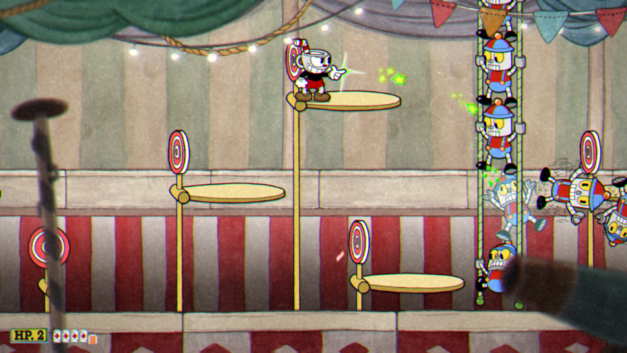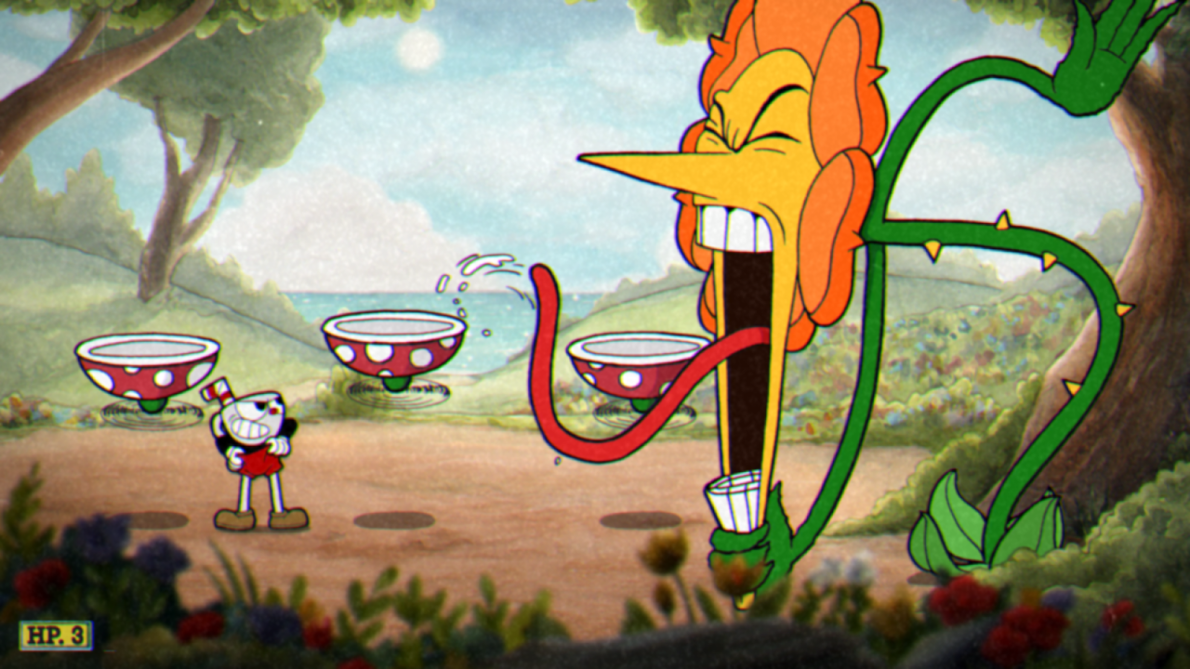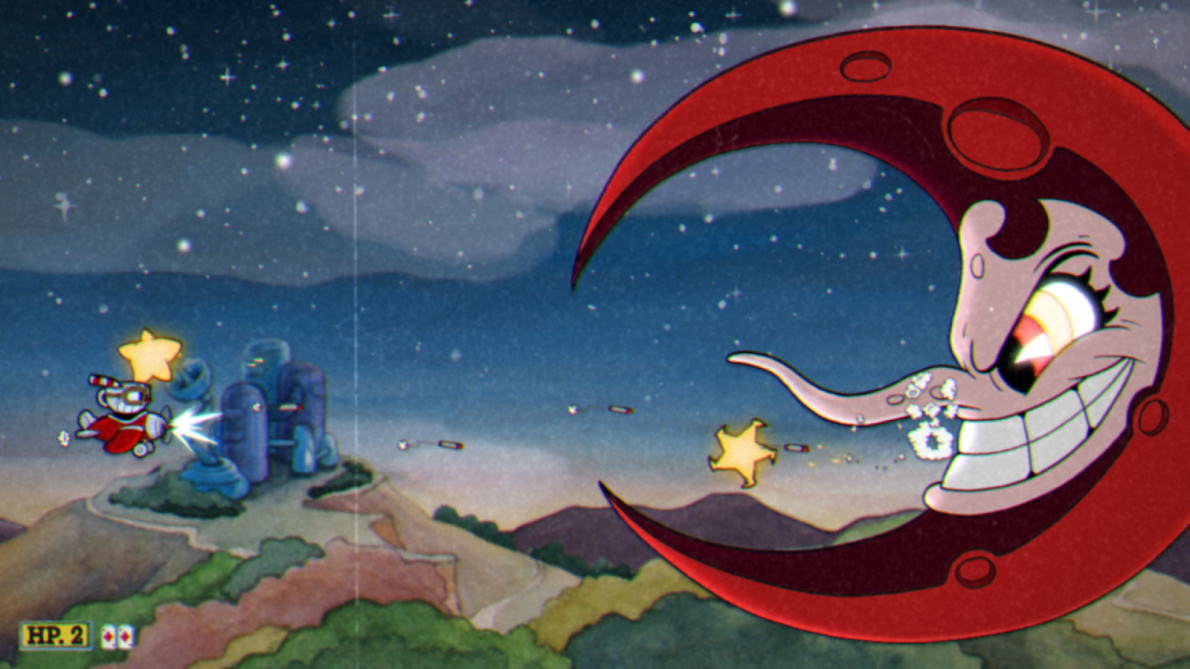It looks like the Fall gaming season has started on a strong note with the release of Studio MDHR’s Cuphead. For the uninitiated, Cuphead is a run-and-gun action game designed in the style of 1930s cartoons. The plot revolves around two brothers, Cuphead and Mugman, who after striking a deal with The Devil, must fight his runaway debtors in order to keep their souls. Wonderfully hand-drawn visuals and a plethora of challenging, yet charming boss fights are given the spotlight in this passion project by brothers Chad and Jared Moldenhauer.
To make Cuphead a reality, the Moldenhauer brothers devoted years of work and risked their financial well-being in order to focus on improving the game. After numerous delays, there was a growing concern that the game would follow a similar path to No Man’s Sky and Mighty No. 9, two games that were both infamous disappointments to its critics and fans. In a time where spectacular indie games are released within weeks of each other, could Cuphead’s gameplay and aesthetic save it from getting lost in the crowd?

In terms of gameplay, Cuphead is very similar to classic run-and-gun games like Gunstar Heroes and Contra. This is apparent with the way Cuphead and Mugman move about in each level and how they are able to equip various weapons such as the ‘Spread Shot’ and the ‘Chaser Shot’. There are three specific level types throughout Cuphead: boss levels, run n’ gun levels, and mausoleums. Boss levels are the main focus out of the three forms and they tend to revolve around fighting large foes that are scattered around Inkwell Isle.
These boss battles emphasize tasks such as identifying the tells to their attacks, dodging and parrying specific objects and projectiles while also doing enough damage in each of the boss phases. In each phase, the boss tends to undergo a peculiar transformation with new attacks and tells to compliment the changing appearance of that specific enemy.
Maintaining focus is crucial. Every attack by a boss has either a visual or vocal tell and if you ignore a tell than you will be punished. Failure is also inevitable. You will die during your first encounters with the majority of bosses. The game will not hold your hand and it will rarely give you advice on how to defeat a boss. Some bosses will fire off a projectile that travels in a slow arc while in other battles, you must dodge a laser beam that stretches across the screen in an instant. This is the unfortunate circumstance regarding certain bosses. Positioning, timing and luck will influence your chances of defeating these intimidating foes and you must adapt if you want to see what the rest of the game has to offer.
Each phase is also new hell. Phases are a mixed bag in terms of difficulty. They provide jaw-dropping changes to an enemy’s design that contribute to the game’s charm. However, these new forms also serve as a gateway for more punishment as they establish new attack patterns that result in multiple deaths. Since the bosses have no visible health bar, you will simply have to learn their new patterns in hopes of outlasting each phase.
Yet, overall it is still enjoyable. The jubilation of completing the game was akin to my experiences with my some of own personal favorites such as Donkey Kong Country 2, The Binding of Isaac, Cave Story, Shovel Knight and the aforementioned Gunstar Heroes. Despite the hundreds of deaths from my first playthrough, I found that the game balanced difficulty with enjoyment to an excellent degree. The levels are engaging and never appear to be unfair. They also benefit by being short in duration, lasting typically three to five minutes and once you understand each attack, the stress from each phase lessens. Even if you fail near the end of a boss fight, you can reach that point again in a matter of minutes if you adapt in your next attempt.
I cannot help but reminisce about the boss fights given the marvelous details for each one. The delightful visuals essentially serve as the reward for overcoming each major trial and I have no complaints about that facet. If you are under the impression that this game is absurdly brutal, just know that the game believes that you can beat it. It encourages you to take your time and plan out your next attempt. Once I completed it all, I still took the time to revisit after playing some of the other new additions to my Steam library because I found that it was more difficult to stop playing Cuphead than it was to beat even the most punishing of bosses from the game.

The run-and gun levels involve getting to the endpoint of the levels as enemies attack you from various positions. These levels are also the main provider for coins which allow you to purchase from an array of shot types and equippable skills that will aid you along your journey to defeat The Devil. The inclusion of these levels did contribute to the concern towards Cuphead during the game’s development as they were initially viewed as generic or unnecessary. However, these levels have since been changed to be more hectic and exciting in the time before the game’s release.
Lastly, mausoleums are areas scattered within each of the three main sections of Inkwell Isle that are useful levels for helping the player understand the intricacies of parrying while also rewarding the player with super abilities that can be used throughout the other levels. The issue with the mausoleums however, is that it becomes more of a distraction as one progresses through each map as they are notably easier than the other levels and fail to introduce any significant changes that make these areas worth revisiting. While these overworld maps are wonderfully painted, they are unfortunately barren when it comes to having objects to interact with excluding the residents of the isle and the level cursors.
Now in regard to the difficulty of the experience, yeah…it’s certainly challenging. However, it is less of a “controller smashing” difficulty and more “trial and error.” You will die when fighting a boss, but as you learn an enemy’s tells, experiment with your equipment, and memorize the attack patterns, it becomes easier to dismantle each foe. Each boss is unique and as a result, there will be a select amount of them that you may despise to an excessive degree as they will shatter your resolve in a single moment. If a level proves to be far too much of a struggle to overcome, Cuphead’s co-op mode is an alternative that is worth considering. I would not consider this mode to be the definitive way to play, but I would recommend that every owner of the game should give co-op a try for even just a few stages.

The aesthetic of Cuphead is without a doubt, the main highlight of the game. It became very clear within the first hours of playing this game that Studio MDHR was fully committed to replicating the look of 1930s cartoons particularly those from Fleischer Studios. The combination of hand-drawn animation, watercolor backgrounds and the jazz and ragtime soundtrack ties this game together perfectly. The facial expressions and body gestures of the characters are charming as it fits so well with the game’s style. The style of it is executed in such an eye-catching manner to the point where just getting to a new boss or area serves as an award.
It is not the first modern game to pay homage to the 1930s era of animations since releases such as Bendy and the Ink Machine, Skullgirls and Kingdom Hearts II have all provided characters and worlds that pay tribute to the art style. However there is no contest when I say that Cuphead reproduces the feeling of this era of cartoons better than any of the other options.
It is a phenomenal tribute to a beloved time period of animation that sadly never crossed over into the gaming industry until now.
The gameplay may not be an innovation from the classic run and gun games that inspired it but despite this, the boss fights are varied enough to ensure that players have to remain focused (even if certain boss fight go overboard with projectiles or positioning). The aesthetic of the game definitely contributes to establishing memorable boss fights as well. Given the amount of time and resources that were spent in refining the design and visuals, a game such as Cuphead could use all the support that it can get.
If the style of the game interests you, give it a look. The gaming industry may not see another release as committed to style as much as this one. So do not disregard this game and hope that there will be a wave of superior releases in a similar style within the near future. It is far too soon to determine the next project that Studio MDHR will undertake. However, their passion project has obtained the attention and adoration of an expansive audience to a extent where it is safe to assume that the creation of Cuphead was worth the hardships faced over the past seven years during the project’s development.




Comments are closed.